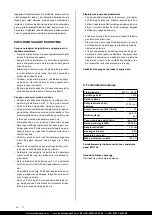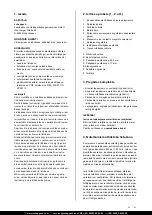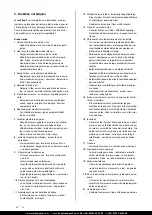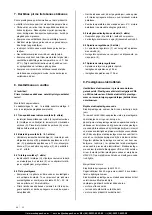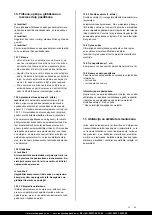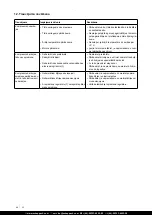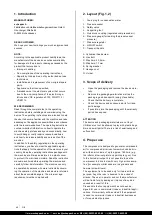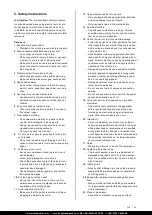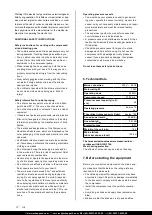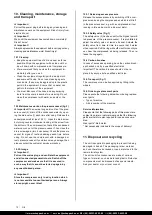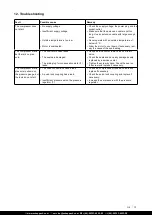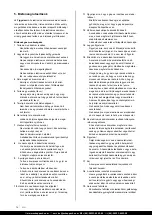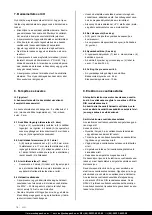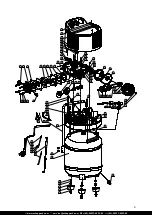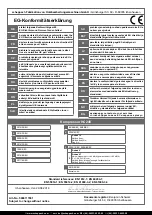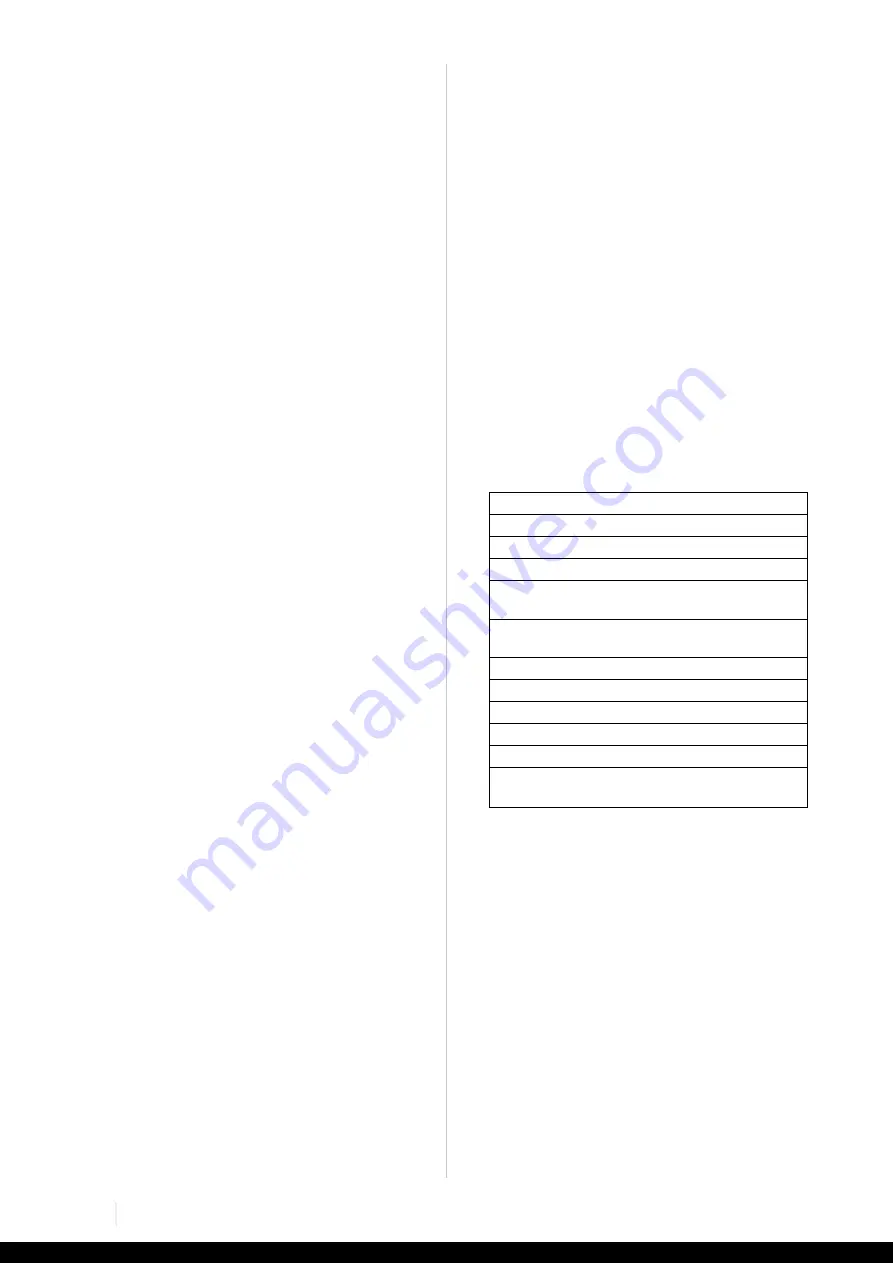
70
GB
www.scheppach.com
service@scheppach.com
+(49)-08223-4002-99
+(49)-08223-4002-58
Warning! This electric tool generates an electromagnetic
field during operation. This field can impair active or pas
-
sive medical implants under certain conditions. In order
to prevent the risk of serious or deadly injuries, we rec-
ommend that persons with medical implants consult with
their physician and the manufacturer of the medical im-
plant prior to operating the electric tool.
ADDITIONAL SAFETY INSTRUCTIONS
Safety instructions for working with compressed
air and blasting guns
• The compressor pump and lines can become very hot
during operation. Touching these parts will burn you.
• The air which is sucked in by the compressor must
be kept free of impurities that could cause fires or
explosions in the compressor pump.
• When releasing the hose coupling, hold the hose
coupling piece with your hand. This way, you can
protect yourself against injury from the rebounding
hose.
• Wear safety goggles when working with the blow-
out pistol. Foreign bodies or blown off parts can
easily cause injuries.
• Do not blow at people with the blow-out pistol and
do not clean clothes while being worn. Risk of
injury!
Safety information for paint spraying
•
Do not process any paints or solvents with a flash
point below 55° C. There is a risk of explosion!
• Do not heat up paints or solvents. There is a risk of
explosion!
• If hazardous liquids are processed, wear protective
filter units (face guards). Also, adhere to the safety
information provided by the manufacturers of such
liquids.
• The details and designations of the Ordinance on
Hazardous Substances, which are displayed on the
outer packaging of the processed material, must be
observed.
• Additional protective measures are to be undertak-
en if necessary, particularly the wearing of suitable
clothing and masks.
• Do not smoke during the spraying process and/or
in the work area. There is a risk of explosion! Paint
vapors are easily combustible.
• Never set up or operate the equipment in the vicin-
ity of a fire place, open lights or sparking machines.
• Do not store or eat food and drink in the work area.
Paint vapors are harmful to your health.
• The work area must exceed 30 m
3
and sufficient
ventilation must be ensured during spraying and
drying. Do not spray against the wind. Always ad-
here to the regulations of the local police authority
when spraying combustible or hazardous materials.
• Do not process media such as white spirit, butyl
alcohol and methylene chloride with the PVC pres-
sure hose. These media will destroy the pressure
hose.
Operating pressure vessels
•
You must keep your pressure vessel in good work-
ing order, operate the vessel correctly, monitor the
vessel, carry out necessary maintenance and repair
work immediately and meet the relevant safety
precautions.
•
The supervisory authority may enforce essential
control measures in individual cases.
•
A pressure vessel is not allowed to be used if it has
faults or deficiencies that can endanger workers or
third parties.
•
Check the pressure vessel for signs of rust and
damage each time before using. Do not use the
compressor with a damaged or rusty pressure
vessel. If you discover any damage, then please
contact the customer service workshop.
Do not lose these safety instructions.
6. Technical Data
Mains connection
230 V ~ 50Hz
Motor rating W
1500
Operating mode
S3 25%
Compressor speed
3750 min
-1
Pressure vessel capacity (in lit-
ers)
24
Operating pressure
approx. 10
bar
Theoretical intace capacity (l/min)
approx. 180
Sound power level L
WA
95 dB(A)
Uncertainty K
WA
0.91 dB
Protection type
IP20
Weight of the unit in kg
16.2
Max. altitude
(above mean sea level)
1000 m
The noise emission values were measured in ac-
cordance with EN ISO 3744.
Wear hearing protection.
The effects of noise can cause a loss of hearing.
7. Before starting the equipment
Before you connect the equipment to the mains sup-
ply make sure that the data on the rating plate are
identical to the mains data.
•
Check the equipment for damage which may have
occurred in transit. Report any damage immediately
to the transport company which was used to deliver
the compressor.
•
Install the compressor near the point of consump-
tion.
•
Avoid long air lines and supply lines (extension ca-
bles).
•
Make sure that the intake air is dry and dustfree.

